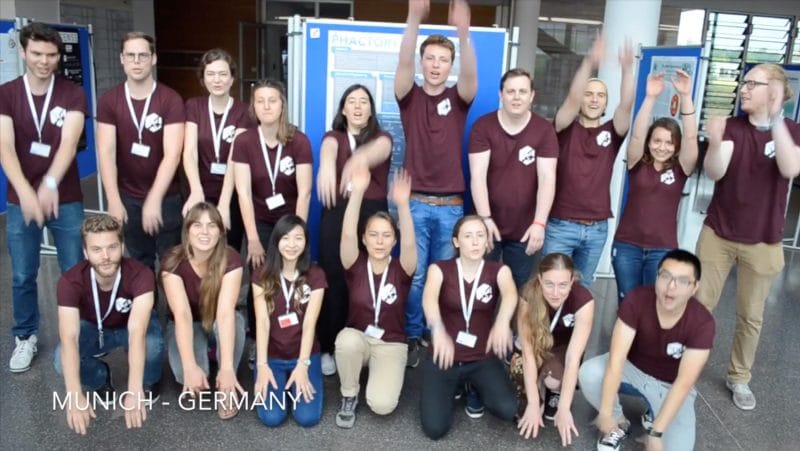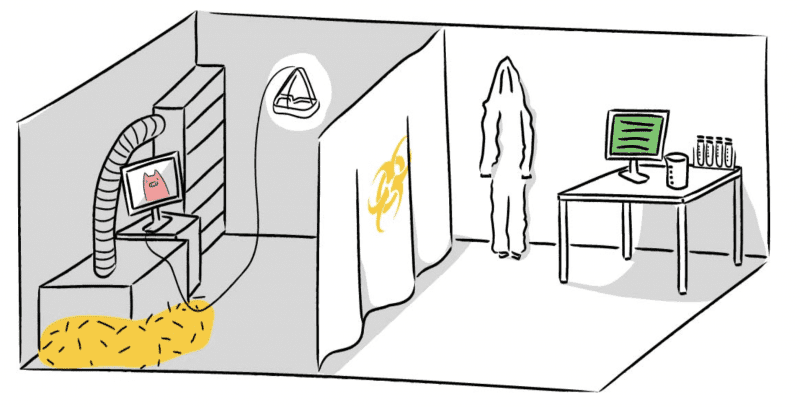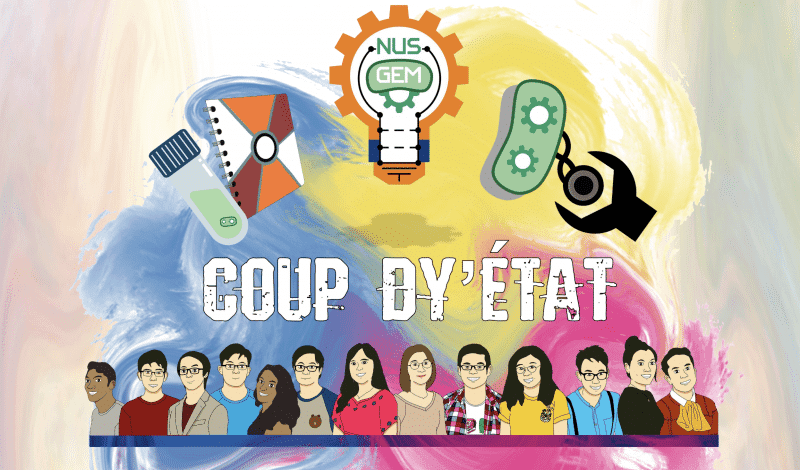Bioeconomy Policy
Cell-free expression platforms enable new possibilities at iGEM and beyond
Nov 29, 2018
It’s time for the widespread adoption of cell-free expression methods at iGEM.That is how one team -- Paris Bettencourt -- summarized their experience with cell-free technology after this year’s International Genetically Engineered Machines (iGEM) competition. Dedicated to advancing synthetic biology and fostering open, friendly collaboration, iGEM brings together high school and university students who work together in interdisciplinary teams to “push the boundaries of synthetic biology by tackling everyday issues facing the world.” At the annual iGEM Jamboree, the teams -- comprised of nearly 6000 students -- come together to present their work and compete for a number of awards, including category-specific honors as well as grand prize awards in undergrad, overgrad, and high school divisions. This year, many award-winning teams took advantage of the speed and ease of cell-free systems to reliably produce the movers and shakers of our natural world: proteins.Most of us don’t realize it, but custom proteins are a necessity in our daily lives. They are in the clothes we wear and the foods we eat, and in the life-saving drugs so many people rely on to manage their health.For decades, we have been making proteins using their original source: cells. While biology’s chosen method for making proteins has worked well enough, researchers have been working on ways to isolate the protein production machines from cells and power them externally. In other words, we can now go from DNA to protein without worrying about the finicky needs of the cell. This reduces time and cost, and allows us to produce proteins that might be toxic to cells or that require special conditions to fold correctly and be functional.Arbor Biosciences is a leader in making easy-to-use, cost-effective, and in particular highly efficient cell-free expression kits available to everyone. Their myTXTL® Cell-Free Expression platform, originally developed by Vincent Noireaux, PhD, at the University of Minnesota, is an all E.coli transcription (TX) and translation (TL) system provided as a master mix in a single, ready-to-use tube. The tube includes everything needed for protein synthesis -- cell extract, an energy source, amino acids, and cofactors. You just add DNA -- either as a plasmid or synthesized linear DNA -- and proteins are formed within minutes.In this year’s iGEM competition, Arbor Biosciences supported the projects of seven teams from around the world will cell-free expression technology and technical support. The myTXTL kits each team received proved to be a great tool for iGEM competition because of the quick design-build-test cycle that removes the time and effort needed for transformation, cloning, and screening -- a critical time-saver for teams that only have a few months to finish their projects.So, what were the teams able to accomplish with these cell-free systems?
Engineered bacteriophages as an alternative to antibiotics (Team Munich)
Bacteriophage therapy has recently regained popularity as a promising approach to combat arising multidrug-resistant bacterial infections in animals and humans, one of the biggest public health challenges of our time. This is due to advances in biotechnology, such as the development of efficient cell-free expression systems, that allow scientists to generate bio-engineered or difficult-to-produce phages. Using myTXTL, Team Munich built a simple, effective, rapid, and safe method for phage self-assembly called Phactory.

Team Munich shows off both their spirit and their cell-free approach to bioengineering bacteriophages at the iGEM European Meetup in July 2018 in Munich. Photo courtesy Team Munich.
Phactory’s cell-free approach gave them the extraordinary ability to build tailor-made phages without requiring genetic engineering, simply by adding modified proteins into the assembly tube. As a proof of concept, they added a modified capsid protein containing eYFP to create a fluorescent T4 phage, which could serve as an imaging platform for diagnosis or research purposes.For their in vitro approach to bacteriophage engineering, the team was first runner-up in the over-grad division at the Giant Jamboree, and several parts of their project are patent pending.
Star-shaped antimicrobial peptides help French pig farmers combat antibiotic resistance (Team Paris-Bettencourt)
Antibiotic resistance is not only a problem in human healthcare -- it is a critical issue in agriculture, too, affecting crops and animals alike. Inspired to help French veterinarians, farmers, and policymakers, Team Paris-Bettencourt from France is using cell-free technology to produce difficult-to-manufacture star-shaped antimicrobial peptides (SNAPPs).The team chose to use antimicrobial peptides because it is more difficult for bacteria to develop resistance to them. Fusing several different natural and synthetic AMPs to star cores, the team has been able to replace chemically synthesized SNAPPs with synthetic biological fusion proteins. Their SNAPPs, which won an iGEM Gold Medal, represent a cost-effective, low-toxicity solution to kill gram negative bacteria on French pig farms without further contributing to the antibiotic resistance problem.

Paris Bettencourt’s 2018 iGEM project used cell-free expression as a tool to help French pig farmers combat antibiotic resistance. Photo courtesy of iGEM Team Paris Bettencourt 2018, illustration by Elodie Coquillat.
Reducing water pollution, increasing protein production, and improving cancer detection
While teams Munich and Paris-Bettencourt have certainly designed ground-breaking, award-winning systems to tackle antibiotic resistance, the other Arbor-supported iGEM teams have been contributing solutions to a wide array of problems.Teams Northwestern and NUSGEM are tackling water pollution from heavy metals and synthetic dyes, respectively, while Team GIFU is seeking to optimize large-scale cell-free protein production from circular RNA. And, Team EPFL is developing cell-free cancer detection, expression of patient-specific antigens, and vaccines. The accomplishments and dedication of each and every team are truly inspiring.

The NUSGEM iGEM team’s project, Coup Dy’Etat, seeks to disrupt conventional biomanufacturing and the synthetic dye industry by developing a novel biomanufacturing platform to turn waste into sustainable dye. Image courtesy NUSGEM 2018.
“We identify with the hard work, passion and heart that all participating students put into their projects,” said Evelyn Eggenstein, PhD, of Arbor Biosciences. “By connecting with young professionals training to be the next generation of scientists and innovators, we recognize their commitment to improve and develop the scientific world.”Arbor Biosciences will continue to support iGEM teams in 2019, and will exhibit again at the Giant Jamboree to increase awareness about the power of cell-free protein synthesis. “We expect the number of teams using cell-free systems like myTXTL®️ to increase as this technology enables them to achieve more of their project goals in the same time period. This is especially true when cell-free expression in done with linear DNA templates that are usually provided as gene blocks by sponsors like IDT,” explains Matthew Hymes with Arbor Biosciences.Cell-free methods are beginning to make a real impact at iGEM, but that is just the tip of the iceberg. Not only are cell-free technologies narrowing the gap between DNA and protein technologies, but they’re also expanding our knowledge of diseases like malaria and improve our chances of discovering new drugs and vaccines. And, cell-free technologies are bringing synthetic biology to industries outside of life sciences. In the future, cell-free technologies are likely to provide feasible, economic, and sustainable solutions to some of the world’s toughest problems.

















